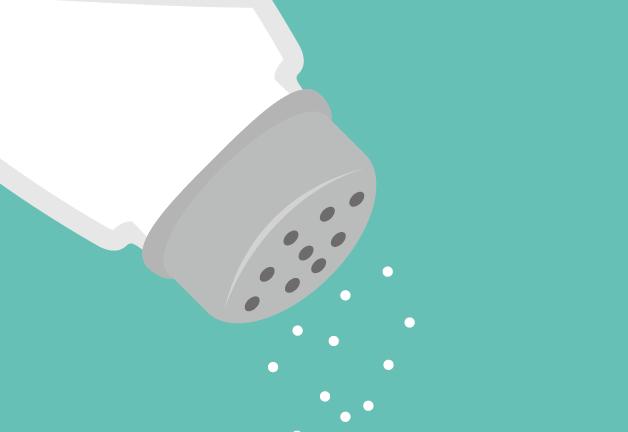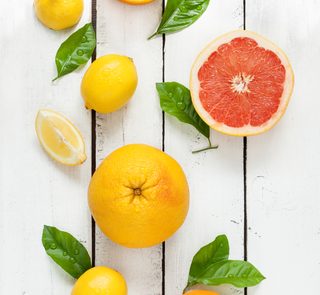From delicious healthy recipes to the best nutritional advice, this is everything you need to know about what’s on your plate this month
For the past couple of years, sugar has been the ingredient criticised by the health industry, nutritionists and the media and, with 24 percent of adults in the UK claiming they are addicted to it, it’s certainly something to watch out for, but how does it compare to our favourite dinner time seasoning that took the health backlash before it: salt? We spoke to some of the UK’s leading nutritionists to find out how much salt is too much.
The nitty gritty
As salt is technically a mineral, it’s found in a lot of foods, particularly the savoury ones that you crave with a glass of Pinot Grigio. But, how does it work within the body? “Salt is an essential mineral and shouldn’t be avoided entirely,” says nutritional therapist Henrietta Norton (wildnutrition.com). “Among other roles, it’s involved in balancing electrolytes, keeping the body hydrated, and healthy organ functioning.” To confuse you a little more, the amount of salt that we needs varies from person to person. “We actually need a little bit of salt for optimal health,” says Terry Fairclough, leading nutritional therapist and co-founder of yourbodyprogramme.com. “However, that amount differs and some people are more susceptible to the effects than others.” Too much salt can have more serious health consequences on those from ethnic minorities living in the UK, including people of Black African and South Asian descent (actiononsalt.org.uk).
Too much or too little?
The results of consuming excess salt are more researched than the consequences of eating too little, but some studies in the US have linked low-sodium diets to increased insulin resistance (healthline.com). We know that high dietary salt is one of the leading causes of high blood pressure, which in turn can increase the risk of developing serious health conditions, such as cardiovascular disease and stroke. So is there a middle ground to aim for? “While guidelines suggest an upper limit of 6g (the equivalent of one teaspoon) of salt per day in adults, with the availability and accessibility of processed and packaged foods, it’s very easy to exceed this amount,” says Henrietta. Huge amounts of excess sodium tends to come from processed, packaged foods, the stuff you probably want to cut back on anyway, so if you are concerned about your intake, go down the route of reducing processed and packaged foods in your diet before discussing a low-sodium lifestyle change with your GP.
Hidden salts
Thanks to the research into the risks of eating too much salt, you’re probably already clued up on where it’s lurking inside the foods you eat. “Cheese, processed meats, chips, crisps, olives, sauces, gravy and stock cubes are all typically high in sodium,” says Emma Brown, nutritionist (nutracheck.co.uk). “As are processed foods like breaded chicken and sausages, where salt is used as a preservative.” If you watch what you eat, but not your salt intake, then make sure that some of your favourite health foods aren’t tipping you over your daily allowance – we’re looking at you, halloumi and sauerkraut! “Other foods that contain salt are bread, soups, cooking sauces, biscuits, cereals and ready meals. Always check the label because the RDA is no more than 6g per day.” Check the back of the label to find out the amount of salt in your favourite food.
Sugar vs salt
Sugar and salt are both known to cause health concerns and, in the long-run, are no better than the other. “Overconsumption of both can lead to health risks,” says Emma. “We actually require a small amount of salt for normal body functioning as it plays an essential role in fluid regulation. But too much is linked to increased blood pressure and risk of heart disease. Sugar is used by our cells as fuel, and when it comes from foods where it naturally occurs, such as in fruit and milk products, it doesn’t have the same negative impact on insulin levels as added sugars, which can lead to increased fat storage. However, too much added sugar from sugary drinks and confectionery can lead to excess weight gain and an increased risk of high blood pressure, heart disease and diabetes. In terms of which is worse, it completely depends on the individual and level of excess. It’s important to monitor both and keep within recommended daily amounts.”
Add spice to your life
Unless you’ve been advised to by your GP, then there is no need to jump on the low-sodium bandwagon and add products with low-salt scrawled across the label to your shopping trolley. Your best bet? Try and cut back on the foods in your diet that you know have hidden salts. “Reduce processed foods that are high in salt and sugar and try to eat fresh meat, vegetables and fruit,” says Terry (yourbodyprogramme.co.uk). “If you do use tinned foods, rinse before use to wash off as much salt as possible.” Another very simple way to reduce your intake is to deduct the amount that’s added to your food and replace with other flavours, such as herbs and spices. “You can even add salt to meat and vegetable hours before you even start cooking, which allows the salt to absorb into the food and will prevent you from adding more at a later stage,” says Terry. If you love a well-seasoned tray of veggies, then opt for salts such as grey, sea and Himalayan pink salt. Himalayan salt contains more calcium, potassium, magnesium and iron than other salts and sea salt can reduce inflammation and even help with muscle cramps – but remember, they are still salts, and in excess, they impact the body in the same way your average table salt would.
Bring it to the table
Want to try cut back on your salt intake? Why not add some of these tasty recipes into your weekly meal plan. These dishes use herbs and spices for flavour, so you won’t need to much seasoning. Find these recipes at yourfitnesstoday.com and remember to take a snap and tag us on our social media pages so we can see all your wonderful creations!





















